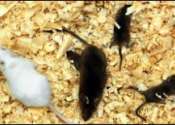Revealing the mystery behind non-alcoholic liver disease
Non-alcoholic fatty liver disease is the most common liver disorder worldwide and is present in approximately 25 percent of the world's population. Over 90 percent of obese, 60 percent of diabetic, and up to 20 percent of ...
Jul 13, 2021
0
8







